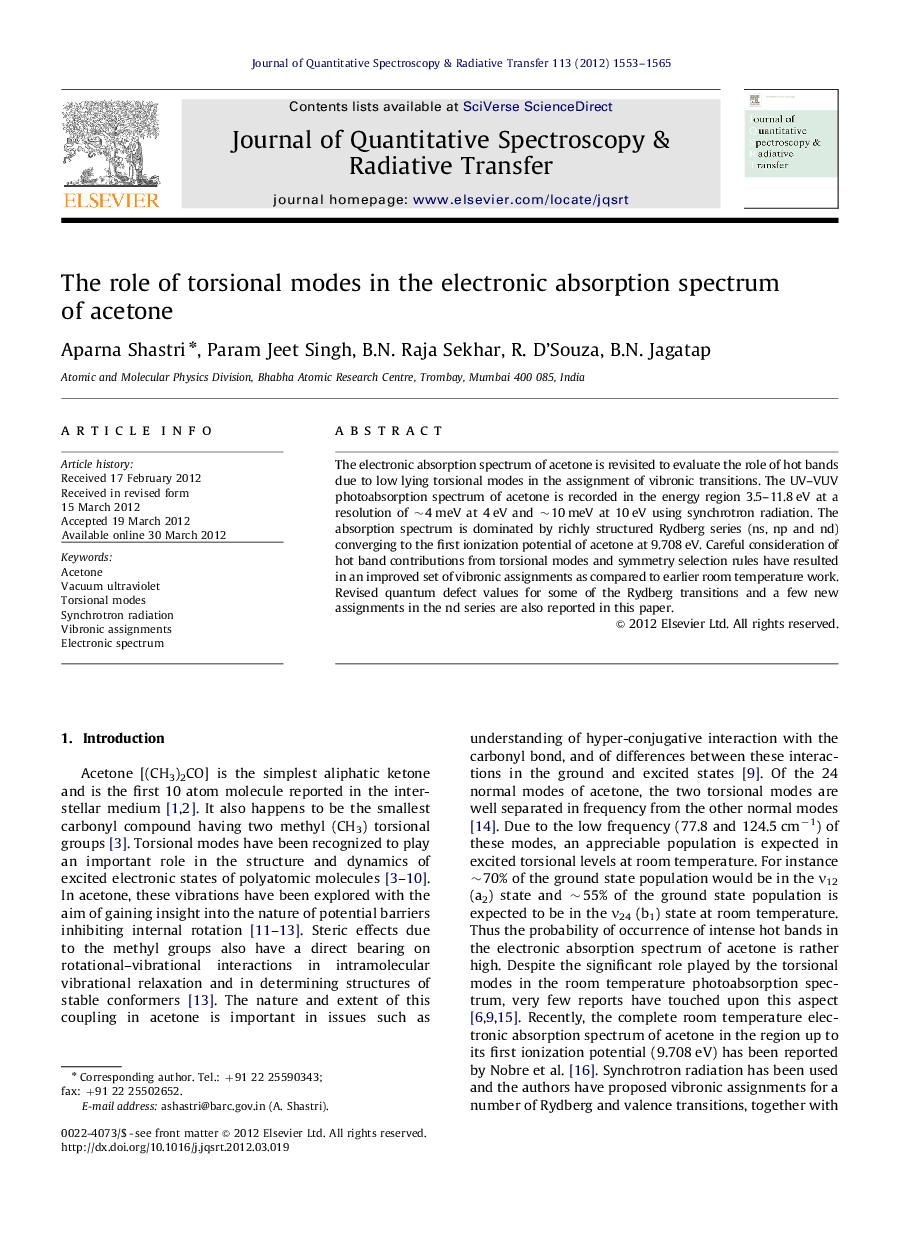| Article ID | Journal | Published Year | Pages | File Type |
|---|---|---|---|---|
| 5429353 | Journal of Quantitative Spectroscopy and Radiative Transfer | 2012 | 13 Pages |
The electronic absorption spectrum of acetone is revisited to evaluate the role of hot bands due to low lying torsional modes in the assignment of vibronic transitions. The UV-VUV photoabsorption spectrum of acetone is recorded in the energy region 3.5-11.8Â eV at a resolution of â¼4Â meV at 4Â eV and â¼10Â meV at 10Â eV using synchrotron radiation. The absorption spectrum is dominated by richly structured Rydberg series (ns, np and nd) converging to the first ionization potential of acetone at 9.708Â eV. Careful consideration of hot band contributions from torsional modes and symmetry selection rules have resulted in an improved set of vibronic assignments as compared to earlier room temperature work. Revised quantum defect values for some of the Rydberg transitions and a few new assignments in the nd series are also reported in this paper.
⺠Electronic absorption spectrum of acetone in UV-VUV region revisited. ⺠Role of torsional modes in vibronic assignments of acetone investigated. ⺠Symmetry selection rules taken into account for accurate analysis. ⺠Discrepancies in earlier work clarified. ⺠A few new assignments are made in nd Rydberg series.
